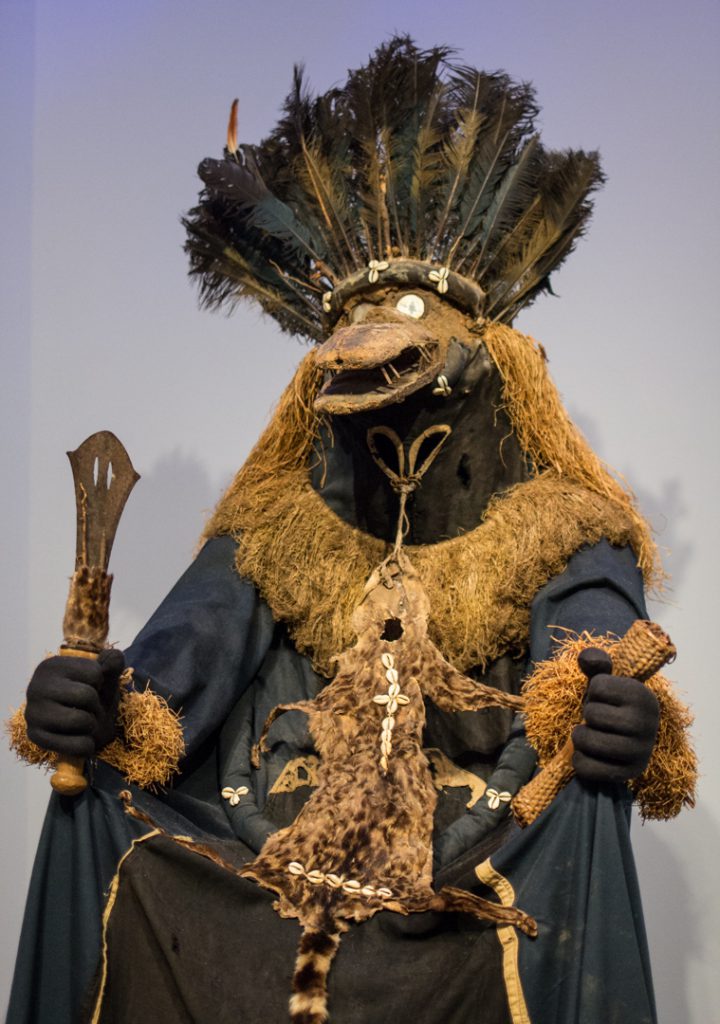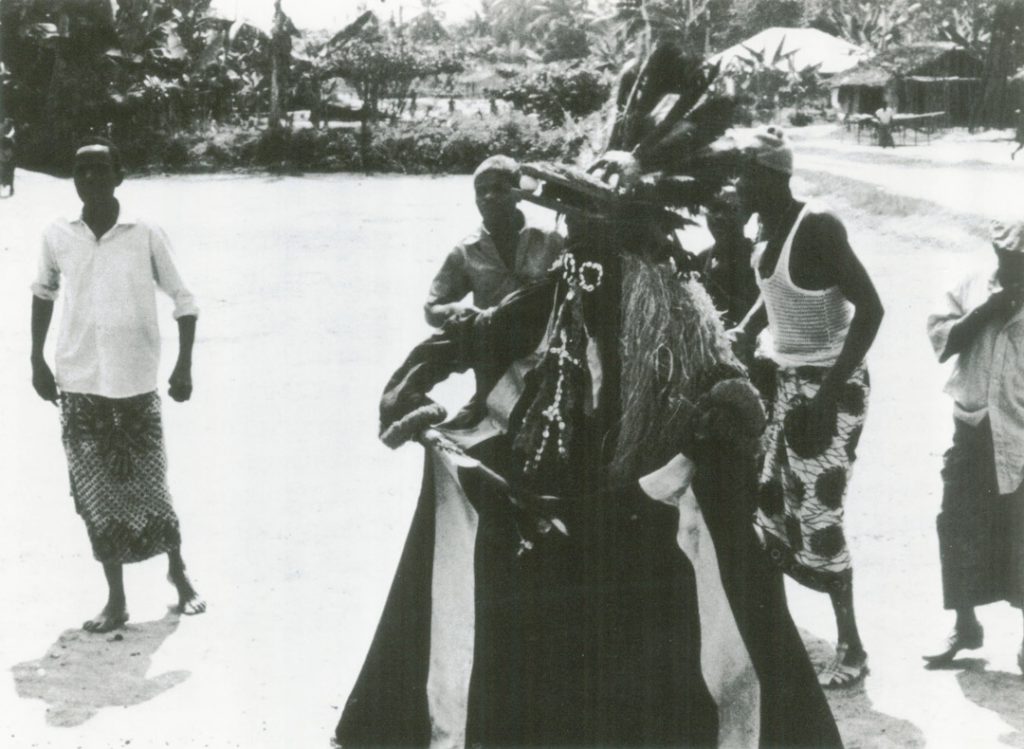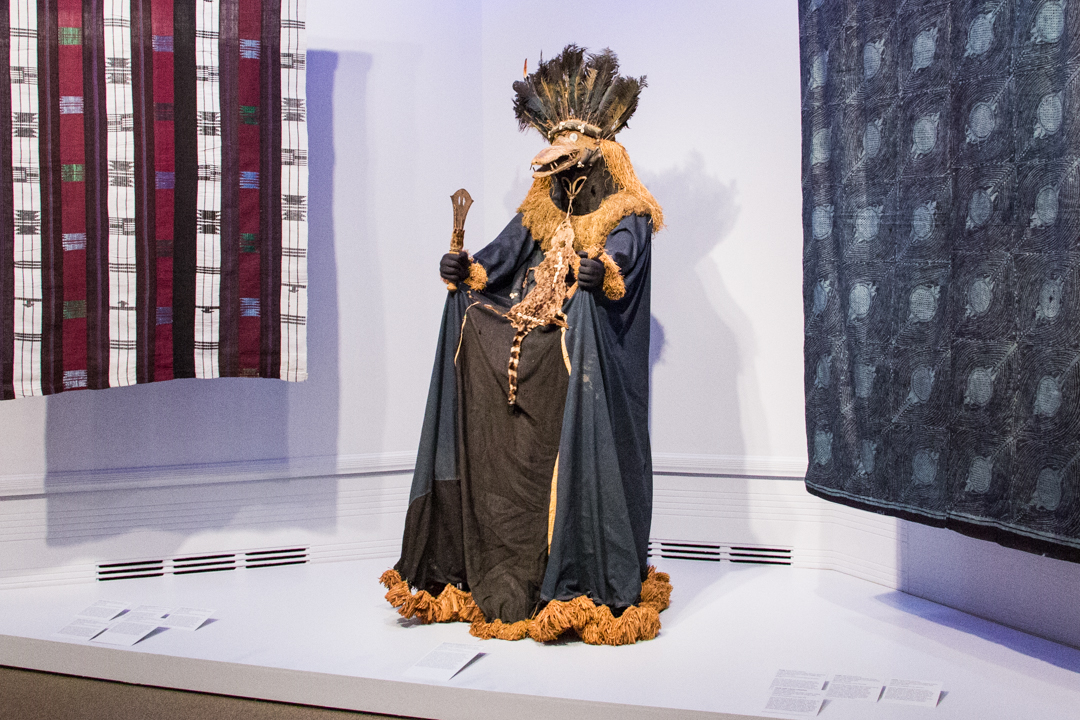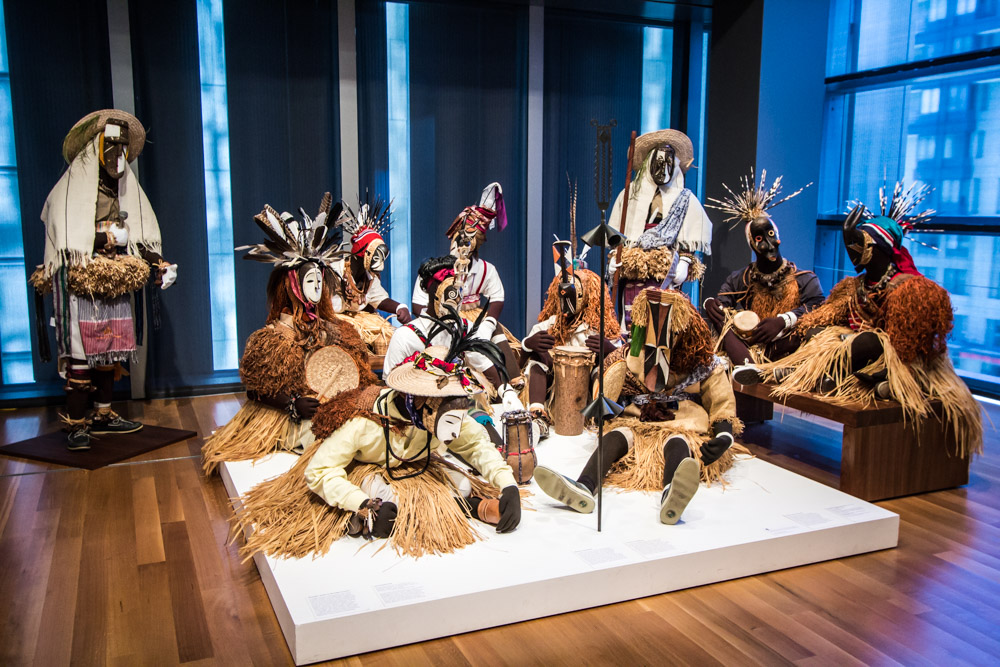Object of the Week: Basinjom mask and gown
In one gallery of the Mood Indigo show at the Asian Art Museum—and you’ll know it when you find it—Basinjom presides. He’s an intimidating presence, often stopping folks right in their tracks. My wife insisted she couldn’t look too long at him, or else she would have nightmares.

Here in the U.S. most of us have no problem understanding that a name is significant. Baby name books and websites and blogs are an expansive directory, allowing parents to match a name that means something with a vision for their child. Basinjom, literally meaning “God’s Medicine,” carries a purposeful name. He is not just a mask or costume, but a healing masquerade, appearing in Ejagham civilizations in Nigeria and Cameroon, where he acts as a powerful restorative force in his community. He has a spiritual aura that gives clear reason for the first part of his name, but the second part is more esoteric. It’s hard to conceive of him as a “medicine.”

SAM curator Pam McClusky explains that “Medicine, in Ejagham terms, is a knowledge of plants and herbs that God provided to fight witches and criminals. Medicine can be manifested in the form of a mask or be located in a container or even a person.”1 When Basinjom is called upon, he acts as detective, judge, and healing agent. He points out the root of witchcraft, which is the seed of discord and ruin in the community, and then banishes it.
Like any medicine, Basinjom is made of many essential ingredients:
- A knife (isome), an iron instrument whose blade has been perforated with eyes to enable Basinjom to see the place of the witches.
- A rattle made of wicker to hear the sound that evil makes.
- Blue feathers of a very strong “war bird,” or touraco, that cannot easily be shot by a gun.
- Porcupine quills, which prevent intrusion from strong elements, even thunder and lightning.
- Eyes that act as mirrors to see into other worlds, especially at night.
- A snout like the mouth of the crocodile, which can speak for the people about controversial things. Eggs are broken over this snout to feed Basinjom.
- Inside the mouth, a piece of the King Stick, the most powerful tree in the forest, used to protect bodies.
- On the back of the head, many herbs that have been collected and pounded together with liquids to serve as a medicinal protection. On top, a mirror enables Basinjom to “see behind,” and a small upright peg with an amulet serves as a bodyguard.
- Deep black and blue cloth, a color that will “not hold death,” because in darkness no human or witch can perceive you.
- Raffia used for hair and a hem as an element from the forest, a dangerous realm that weak men should avoid.
- A genet cat skin, invoking the spirit of an animal familiar who snatches fowls and shields Basinjom from harm. Next to Basinjom, eyes of the owl, alluding to enhanced vision in the deep forest and the bird’s long, strange legs.2
Basinjom is unforgettable. There’s a great chance to engage with him tonight at the Art Globally: Indigo Allure event, where there will be plenty of people around to make sure he’s on his best behavior and no nightmares are had!
—Jeffrey Carlson, SAM Collections Coordinator

